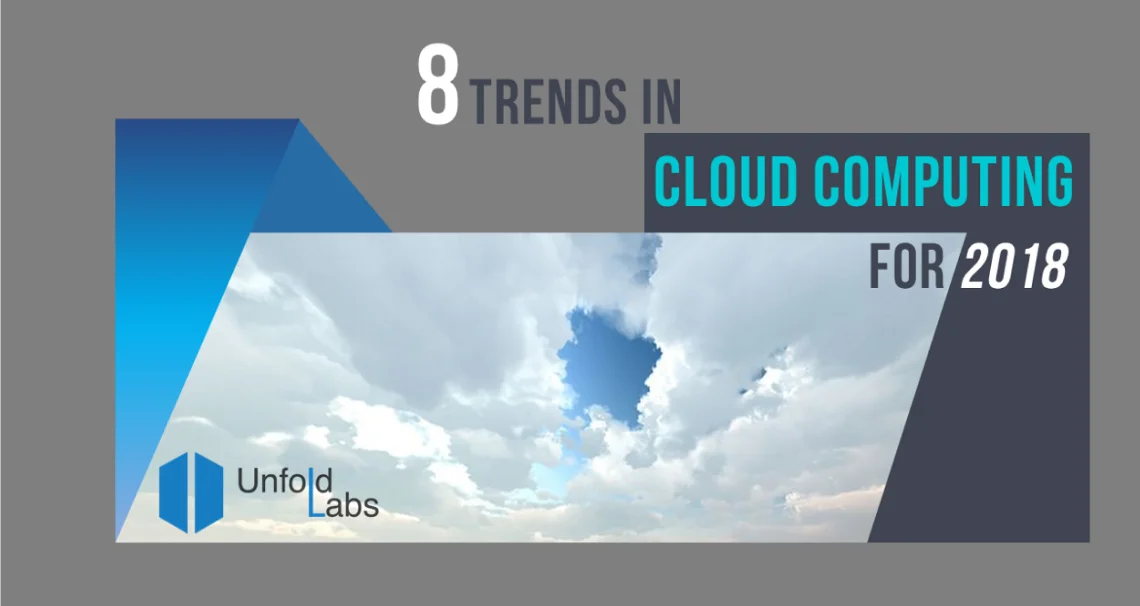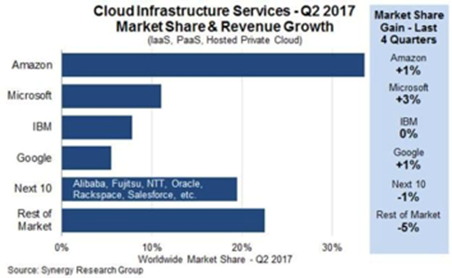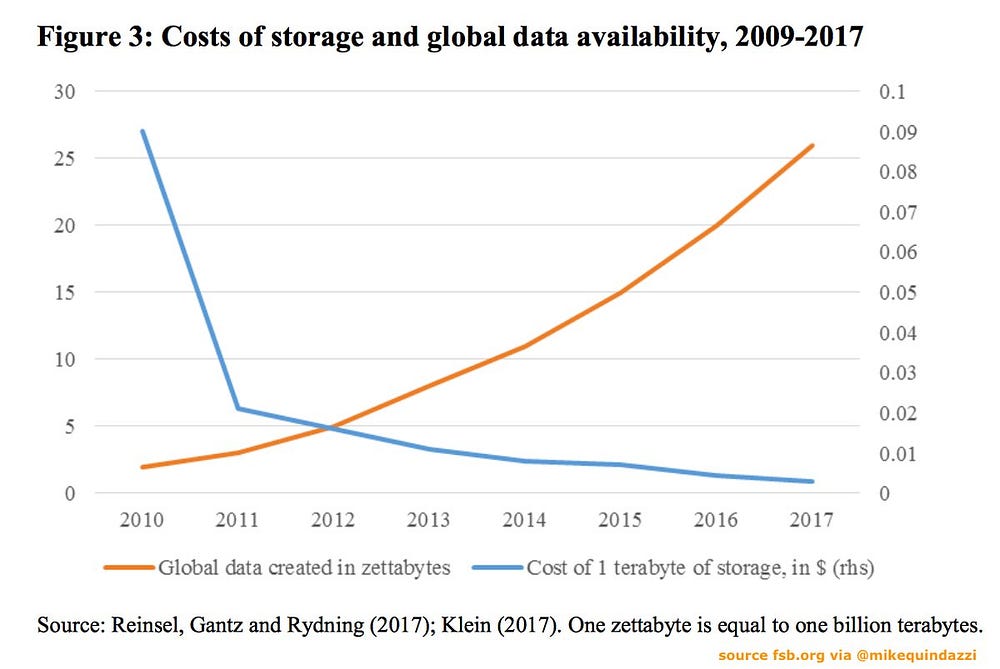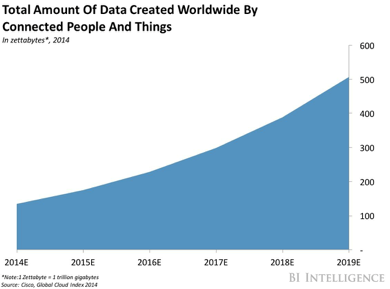8 Trends in Cloud Computing for 2018

Business and IT executives are no longer looking at the Cloud solely as a tool; now the focus has shifted towards finding the right way to use it so they can accomplish their 2018 business goals. The advent of the Cloud has created significant changes to organizations in the past few years. Cloud Computing has provided Big Data with a way to store and retrieve an immense amount of information. It has evolved from personal cloud storage to entire organizations moving all of their data to the cloud.
Although the Cloud has brought so many benefits, larger organizations are still hesitant to transfer their information to the cloud, and that is mainly because of security concerns. But, even with the security concerns, the adoption of Cloud services continues to rise due to the improved usage of cloud-based services including, mobility, increased efficiency, cost-effectiveness, streamlined collaboration, and speed of connectivity.
Here are some data points for us to look into:
- Public cloud platforms, business services, and applications will reach $236B - growing at a 22% CAGR between 2015 and 2020. The cloud application market will grow faster, with the 2020 total being 17% higher than the 2014 projection. - Forrester.
- Enterprise cloud spending is growing at a 16% CAGR between 2016 and 2026. - SiliconANGLE
- At least half of IT spending will be Cloud-based in 2018, reaching 60% of all IT infrastructure, and 60–70% of all software, services, and technology spending by 2020. It is also predicted that in the same year, cloud will be the preferred delivery mechanism for analytics. - IDC
- Cloud computing spending is growing at 4.5x the rate of IT spending since 2009 and is expected to grow at better than 6x the rate of IT spending through 2020. IDC
- The market revenue of Global Cloud IT is predicted to increase to $390B in 2020, attaining a CAGR of 17%. - Bain & Company
- Spending on IT-as-a-Service for data centers, software and services will reach $547B by the end of 2018. - Deloitte
Who will be the leader of Cloud Computing in 2018?
Amazon leads ahead of Google and Microsoft in cloud computing. SiliconANGLE reports that the research firm, Wikibon predicts Amazon Web Services (AWS) will reach $43B in revenue by 2022.

Microsoft on the other hand, though arriving late in the cloud computing industry, is still going strong in the game with its enterprise cloud, Azure. Its relevance is not only that it will soon support Linux but in its ability to compete head-to-head with Amazon.
The advantages of using cloud computing that will influence the market's growth potential, include:
- Easily deployable models
- Simplified IT Management & Maintenance
- Built-in Security
- Remote Access
- Cost Efficient
- Reliable Delivery, Management, and Support Services
" Cloud Computing empowers developers & companies to innovate faster and cheaper. It's impressive that you can spin up any server, any operating system and stack in minutes to get rolling. It is far more secure than the traditional on premise systems and it is a better way to run a business.
- Asokan Ashok, CEO - UnfoldLabs Inc

" When making the move to the cloud, it is important for enterprises to understand that while cloud providers are responsible for securing the cloud, only enterprises can secure how they use the cloud. This requires a new security mindset. Simply "lifting and shifting" an on-premise security stack is certain to fail."
- Jason Guesman, Board Advisor - Lacework
Here is a list of 8 Trends in Cloud Computing that Strategic Businesses should prepare for in 2018

Trend 1 - Growth in Cloud Services & Solutions (SaaS, Paas, IaaS).
With cloud computing on the rise, it's only natural that the cloud services and solutions will also grow.
Bain & Company predicts that Software as a Service (SaaS), where software is licensed on a subscription basis and is centrally hosted, will grow at an 18% CAGR by 2020. The likes of Google Apps, Salesforce, and Citrix GoToMeeting will most likely continue to represent the largest cloud market.
According to KPMG, Platform as a Service (PaaS) adoption is predicted to be the fastest-growing sector of cloud platforms - growing from 32% in 2017 to 56% adoption in 2020. PaaS solutions provide a platform that allows customers to develop, launch, and manage apps in a way that is much simpler than having to build and maintain the infrastructure.
According to Statista, Infrastructure-as-a-Service (IaaS), which provides virtualized computing resources over the internet, will have a market that is predicted to reach $17.5B worldwide in 2018. Amazon holds the largest IaaS market share with Amazon Web Services (AWS) and will be competing with other cloud infrastructure services including Microsoft Azure and Google Compute Engine (GCE).
2018 will be the year where Adoption of Enterprise Cloud Services improves; Consumer Cloud Services will skyrocket, Cloud-based File Sharing Services will Increase, Collaboration Services will become more familiar, Social Media Services will get democratized and get the highest adoption.
Trend 2 - Hybrid Cloud Solutions - Cloud to Cloud and Cloud to On-Premise Connectivity.
Cloud to Cloud Connectivity - Some businesses are not particularly fond of being tied to a single cloud provider, which is why multiple cloud providers are opening up APIs on Platforms for connecting multiple solutions. Opening up APIs is necessary to sync cross-functional and multi-disciplinary process and data management as well as integrating and connecting to systems and tools.
Cloud to On-Premise Connectivity - Most enterprises will keep their on-premise solutions and also connect to cloud-based solutions with heavy customization that will best fit their business needs.
Two main reasons for this phenomenon:
- Although some security solutions are better suited for the cloud, on-premise is still better for network security when it comes to controlling the data flow.
- Enterprise data and systems have grown over a period and migrating them to the cloud remains an issue for most enterprises.
- Cost vs. Return on Investment ratios. Complete migration to the cloud is costly and very time-consuming.
Trend 3 - Cloud Storage and its Multi-Faceted Usage.
Cloud storage is getting cheaper - It's the economics of supply and demand - the higher the supply and the lower the demand, the price goes down. However, with cloud storage, not only is there a significant supply, but a high demand too; therefore, cloud storage is not just cheap, but offered for free from certain cloud providers so they can gain market share and collect valuable user data.

Crowd Sourced Storage -Instead of using expensive, slow, and sometimes insecure traditional cloud storage, crowdsourced storage will become an option for people who want to keep the cost low, but still, want to take full advantage of the benefits of the cloud.
Sharing your friends or a strangers' storage will become a common practice and will be used in place of applications like Google Drive or DropBox. Crowd-sourced cloud storage platforms will be used in building and maintaining large scale applications.
Crowd Sourced Data - Major Cloud players like Google and Amazon are giving away Cloud Storage for free to crowdsource data for big data /analytics and artificial intelligence applications.
Cloud Cost Containment - Cost containment is essential for keeping costs down to only necessary expenses to remain within financial targets. The growth of the cloud accelerates as more organizations adopt cloud-based strategies to cut costs. Cloud computing is a long-term cost-cutting IT strategy that reduces infrastructure expenditures and increases ROI by lowering costs while expanding accessibility and productivity.
Cloud Cost Wars - The cloud pricing war between Google and Amazon is based on each organization's attempt to provide the cheapest service and dominate the cloud market. AWS announced its lower prices early this year, and Google introduced Committed Use Discounts (CUD), or as defined by Google, "the ability to purchase committed use contracts in return for deeply discounted prices for VM usage."
Trend 4 - Cloud Security Vulnerabilities.
Security breaches are on the rise. According to the Identity Theft Resource Center, the number of U.S. data breaches tracked through June 30, 2017, hit a half-year record high of 791, a significant jump of 29% from the same period in 2016. The ITRC anticipates that at this rate, there could be a 37% annual increase of breaches in 2017 compared to 2016.
It's no surprise that security was and continues to be an issue with technology; Cloud solutions are not an exception. The data breach of credit reporting agency, Equifax, resulted in the exposure of millions of sensitive personal including people's names, Social Security numbers, birth dates, driver's license numbers, and credit card numbers. Bank breaches are also a common occurrence, mostly due to adopting open banking which leaves the user more vulnerable than ever.

Google's taken some security measures with their security key fob for logging into devices that includes a 2-step verification process. This key fob involves a code that is sent to your smartphone in addition to your fixed password to ensure the safety of your account.
Gartner expects worldwide information security spending to reach $93B in 2018 compared to $86.4B in 2017, and IDC expects the global revenue for security technology to reach $101.6B in 2020.
Security issues will continue to prevail in 2018, which means we will see more cybersecurity companies coming up with new cloud security options.
In order to succeed in the cloud, IT and security teams need to embrace a new operating model. This is exactly what startups such as Lacework are focused on. By bringing automation, speed, and integration with cloud security services, the company redefines how to approach cloud security for success. CSO Online took a deep look at the Lacework solution this summer (Top Security Software, 2017; Lacework unmasks hidden attackers amid data center and cloud chaos).
Trend 5 - Internet of Things (IoT) and the Cloud.
Most IoT devices rely on the cloud to work, especially with connected devices working together. IoT connected devices like household appliances, cars, and electronics, have a cloud-based back end as a means to communicate and store information. The cloud supports these devices, and as we see more IoT devices being made and sold, the cloud usage will continue to increase as a result.

Trend 6 - Serverless Cloud Computing will bring in more usage and use cases.
Serverless Cloud Computing that allows developers to build, run applications and services without worrying about managing/operating servers, will increase cloud usage, and cloud use cases. In addition to not having to manage any infrastructure, Serverless Cloud Computing also improves efficiency by allowing developers to connect and extend cloud services to easily address their applications and multiple use cases. Serverless Cloud Computing requires less time and effort, and it simplifies the release of new updates.
Trend 7 - Edge Computing on the Rise.
Edge computing, or performing data processing at the edge of the network to optimize cloud computing, will also be on the rise. It is a result of increased usage of internet-connected devices. Edge is necessary and will be on the rise in 2018 because it will be required to run the real-time services as it streamlines the flow of traffic from IoT devices and provides real-time local data analysis and analytics.
Trend 8 - Cloud-Based Container Systems will become Mainstream.
Cloud containers as a service will become mainstream because it can provide a better infrastructure security. Also, cloud-based container systems are an alternative to virtual machines and allow for apps to be deployed in a quick, reliable, consistent and straightforward manner — allowing for faster releases of new features and software to run reliably. Furthermore, cloud providers can offer hosted container management services as well as differentiate their platforms from one another through cloud container systems.
Our Take on Cloud for 2018 and Beyond
Adoption of the Cloud will continue to proliferate in the Consumer and SMB/Mid-Market segments; CIO's will take strategic plans to take advantage of the latest offerings from cloud providers. The tools for a visualization of cloud data and processing market will continue to improve. Security, Performance, and Management of cloud-based solutions will be the issues that Cloud providers will have to overcome.
Cloud adoption will be fast in most segments of the market, but the growth in the enterprise segment will be slow due to security issues being the prime factor in CXO's taking a cautious approach with Hybrid Cloud adoption. Some enterprises may see a Private Cloud as a solution as well.
As mobility enhances, the cloud will get more global. Cloud providers will succeed when they can adequately mine the data to build better analytics, proactive monitoring and decision making, data mining and artificial intelligence. Cloud technology will continue to grow in the years to come, and organizations must actively participate in its adoption, development and security.
Do you agree with these trends? OR Do you see any other trends for 2018?